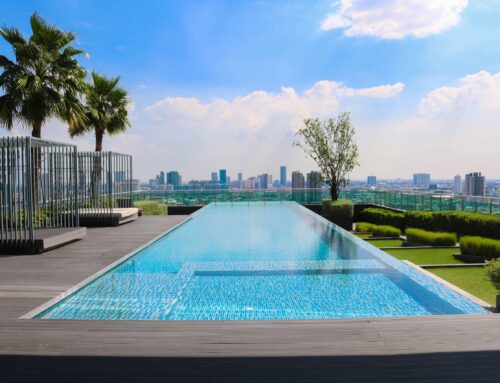
Sustainable Design – A Guide for Builders
Urban living comes with its own set of environmental challenges, but it also offers unique opportunities to lead a sustainable lifestyle. For builders looking to cater to the growing demand for green urban spaces, understanding and implementing sustainable living practices is crucial. This blog post explores practical tips for sustainable urban living, tailored for builders aiming to create eco-friendly homes in metropolitan areas.
1. Maximize Natural Light and Ventilation
One of the most effective ways to reduce energy consumption in urban homes is by maximizing the use of natural light and ventilation. As a builder, you can achieve this by:
Designing layouts that encourage the flow of natural air, reducing the need for air conditioning.
Installing large, energy-efficient windows that not only allow for ample sunlight but also provide insulation during colder months.
Incorporating skylights in designs to enhance natural lighting, especially in densely populated areas where tall buildings may block sunlight.
2. Green Roofing and Vertical Gardens
Green roofing and vertical gardens are not just aesthetically pleasing; they’re functional solutions to urban sustainability challenges. They help in:
Improving air quality by filtering pollutants and carbon dioxide out of the air.
Reducing the heat island effect common in urban areas, thereby lowering cooling costs.
Managing stormwater, reducing runoff, and mitigating flood risks.
Builders can explore incorporating green roofs in their projects and encourage homeowners to adopt vertical gardening by designing structures that support it.
3. Eco-Friendly Materials and Construction Practices
The choice of materials and construction practices plays a significant role in the sustainability of urban homes. Builders should consider:
Using recycled, locally sourced, and sustainable materials wherever possible to reduce environmental impact.
Employing construction methods that minimize waste and pollution, such as prefabrication.
Implementing best practices for efficient on-site waste management and recycling.
4. Energy-Efficient Appliances and Fixtures
Energy efficiency is key to sustainable urban living. Builders can make a big difference by:
Equipping homes with Energy Star-rated appliances that consume less energy.
Installing water-efficient fixtures to reduce water usage.
Providing pre-wiring for solar panels, enabling homeowners to easily switch to renewable energy sources.
5. Smart Home Technology
Smart home technology offers a convenient way to monitor and manage energy consumption. Builders can integrate smart systems that allow residents to:
Control lighting, heating, and cooling systems remotely, ensuring they only operate when needed.
Monitor energy usage in real time, identifying opportunities for conservation.
Automate systems like sprinklers and window shades to optimize their operation based on weather conditions.
6. Encourage Alternative Transportation
Urban dwellers often rely heavily on personal vehicles, contributing to pollution and congestion. Builders can support sustainable transportation by:
Including bike storage facilities in their projects to encourage cycling.
Designing with proximity to public transit in mind, making it easier for residents to choose greener commuting options.
Providing electric vehicle charging stations to promote the use of electric cars.
Conclusion
Sustainable living in urban environments is not just a trend but a necessity as cities continue to grow. For builders, incorporating sustainability into projects presents an opportunity to meet the evolving needs of urban dwellers while contributing to the health of our planet. By implementing these tips, builders can create homes that offer a sustainable, healthy lifestyle for urban residents, setting a standard for future developments.
Understanding these principles and applying them to new projects can
Sustainable Living Tips for Urban Dwellers: Empowering Builders for a Greener Future
In today’s fast-paced urban environments, the shift toward sustainable living is more than just a trend—it’s a necessity. For builders and developers, this presents an incredible opportunity to lead by example, crafting spaces that not only meet the modern urbanite’s needs but do so in a way that’s kind to our planet. Here, we share actionable insights into integrating sustainable practices into urban projects, empowering you to make a tangible difference for future generations.
1. Maximizing Natural Light and Ventilation
One of the most effective strategies for sustainable urban living is maximizing the use of natural light and promoting better ventilation within buildings. By designing layouts that enhance daylight access and cross-ventilation, builders can significantly reduce the reliance on artificial lighting and air conditioning. This not only conserves energy but also enhances the living spaces’ comfort and appeal, making them more attractive to eco-conscious renters and buyers.
2. Incorporating Green Spaces
Green spaces are vital in urban settings, offering residents a slice of nature amidst the concrete jungle. For builders, integrating plant life into your projects—be it through rooftop gardens, vertical greening systems, or landscaped courtyards—can dramatically improve a property’s sustainability profile. Beyond beautification, these green spaces help purify the air, reduce urban heat island effects, and support residents’ mental health and well-being.
3. Prioritizing Energy-Efficient Appliances and Systems
Adopting energy-efficient appliances and systems is a straightforward yet impactful way for builders to contribute to sustainable urban living. From LED lighting to high-efficiency HVAC systems, selecting appliances with superior energy performance not only helps lower carbon footprints but also reduces utility costs for occupants. It’s a win-win scenario that underscores a builder’s commitment to both the environment and their clients’ needs.
4. Encouraging Waste Reduction and Recycling
Waste management is a critical aspect of sustainable living, especially in densely populated urban areas. Builders have a unique opportunity to design waste reduction and recycling into their projects from the start. By providing conveniently located recycling centers and implementing waste sorting systems, you can make it easier for residents to adopt greener habits—transforming individual actions into collective impact.
5. Utilizing Sustainable Materials
The choice of materials plays a crucial role in the sustainability of building projects. Today, there is a wide range of eco-friendly materials available that don’t compromise on durability or aesthetics. From reclaimed wood and recycled steel to low-VOC paints and bamboo flooring, selecting sustainable materials demonstrates a builder’s dedication to reducing environmental impact while delivering high-quality developments.
Building for Tomorrow
As urban populations continue to grow, the responsibility to create sustainable living environments is paramount. We, as builders, hold the power to shape our cities’ futures. By incorporating these sustainable living tips into our projects, we can provide urban dwellers with the green, healthy, and vibrant communities they seek. It’s a commitment to excellence, sustainability, and the well-being of both our planet and its people—a mission that’s both challenging and rewarding.
at Arky Design Pty Ltd, we understand the complexities involved in navigating sustainable building practices. Our experienced team is here to support your endeavors, offering expertise and services tailored to your project’s needs. Together, we can forge a greener, more sustainable future for urban living.
7 star Energy Efficiency in New Homes – 2023 Reach out today to learn how we can partner on your next project.
Reach out today to learn how we can partner on your next project.







